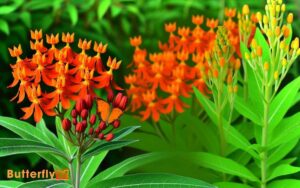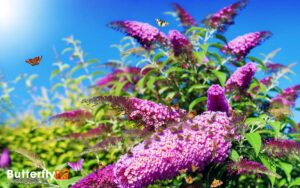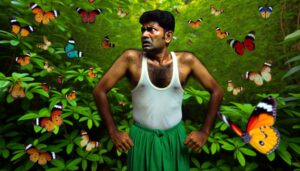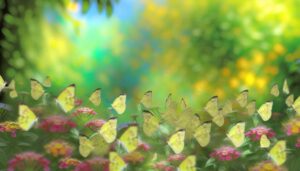Understanding the Shortest Lifespan of a Butterfly
The shortest adult lifespan of a butterfly can be as brief as a few days, primarily observed in species such as the Red Postman (Heliconius erato) and the Common Blue (Polyommatus icarus). This rapid senescence is often a result of intense reproductive activity, which prioritizes mating over longevity.
Factors influencing these short lifespans include genetic predispositions, food supply, predation pressures, and climatic conditions. Additionally, environmental impacts like habitat fragmentation and pesticide exposure exacerbate these effects.
For more detailed insights on how these elements interact and affect butterfly lifespans, further exploration into specific species and their environments is essential.
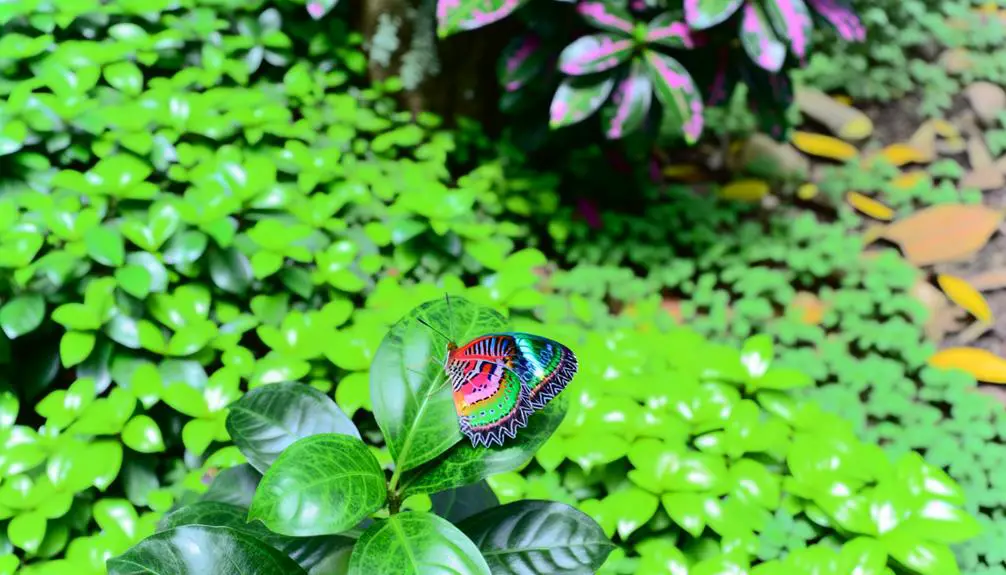
Key Takeaways
- The Red Postman butterfly (Heliconius erato) can have an adult lifespan as short as a few days.
- The Common Blue butterfly (Polyommatus icarus) typically lives only a few days to a couple of weeks.
- The Common Buckeye butterfly has an adult lifespan of about 1 to 2 weeks.
- Rapid senescence in butterflies reflects a trade-off between reproduction and longevity.
Lifecycle of Butterflies
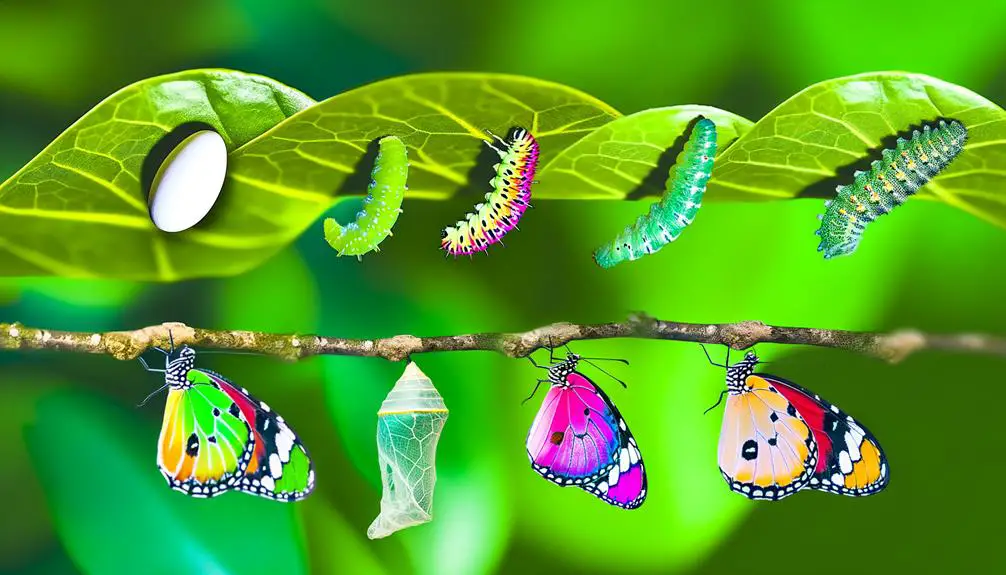
The lifecycle of butterflies, encompassing the stages of egg, larva, pupa, and adult, is a complex process that involves significant physiological and morphological transformations.
During the egg stage, embryogenesis occurs, leading to the emergence of the larva, commonly known as a caterpillar. This larval stage is characterized by rapid growth and molting, undergoing multiple instars.
The subsequent pupal stage, or chrysalis, involves dramatic metamorphosis where larval structures are broken down and reorganized into adult features.
Finally, the adult butterfly emerges, a process known as eclosion, ready for reproduction.
Each stage is crucial for development, influenced by genetic and environmental factors, and meticulously timed to guarantee survival and successful shift to the next phase.
Factors Affecting Lifespan
Numerous intrinsic and extrinsic factors contribute to the lifespan variability observed among butterfly species. Intrinsic factors include genetic predispositions, metabolic rates, and reproductive strategies. Extrinsic factors encompass environmental conditions, availability of food sources, predation pressures, and climatic changes. Research has demonstrated that the interplay between these variables greatly influences individual and species-specific longevity.
| Intrinsic Factors | Extrinsic Factors |
|---|---|
| Genetic predispositions | Environmental conditions |
| Metabolic rates | Availability of food |
| Reproductive strategies | Predation pressures |
| Developmental stages | Climatic changes |
For instance, butterflies in temperate regions may have shorter lifespans due to harsh winters, while those in tropical areas may live longer given constant resource availability. Understanding these multifaceted influences is essential for comprehending the diverse lifespans within Lepidoptera.
Shortest-Lived Butterfly Species
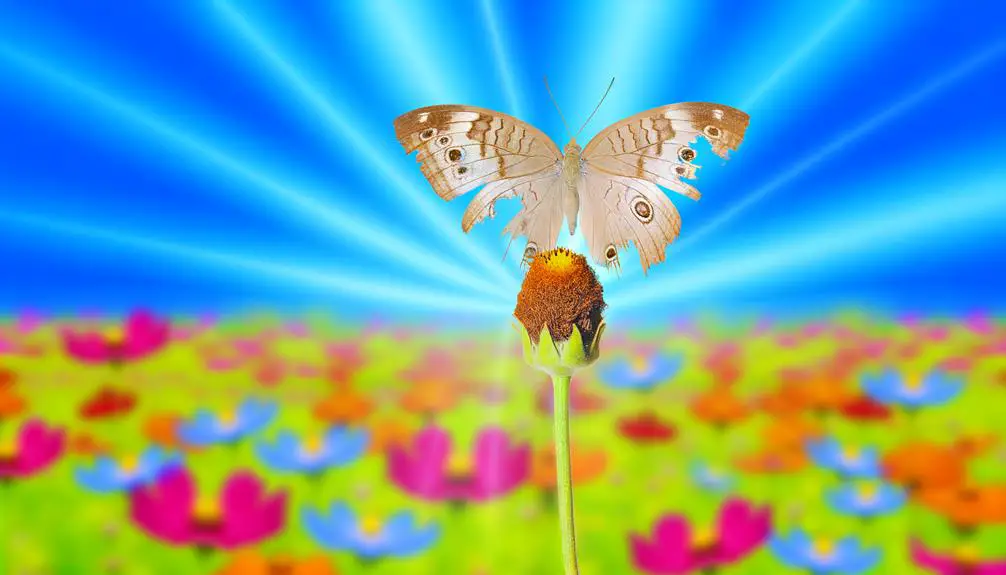
Among butterfly species, the adult lifespan varies considerably, with some experiencing remarkably brief durations. Some species, like the small blue butterfly, live for only a few days, while others, such as monarchs, can survive for several months. This variation in lifespan is influenced by factors like environmental conditions, predation, and resource availability. Interestingly, just as understanding the timing for butterfly bandages is crucial in wound care, the precise timing of a butterfly’s life stages plays a vital role in its survival and reproduction.
For instance, the adult phase of the Red Postman (Heliconius erato) can be as short as a few days under certain environmental conditions.
Species-specific factors such as predation, habitat, and reproductive strategies play essential roles in determining these lifespans.
Adult Lifespan Duration
Research indicates that the adult lifespan of the shortest-lived butterfly species, the Common Blue (Polyommatus icarus), spans merely a few days, highlighting significant variations in life expectancy within the Lepidoptera order.
This brief adult phase is marked by intense reproductive activity, with individuals prioritizing mating and oviposition over longevity. Observational data suggests that environmental factors such as temperature and predation pressures further influence their ephemeral existence.
The rapid senescence observed in Polyommatus icarus underscores the evolutionary trade-offs between reproductive success and lifespan duration. Despite their short adult phase, the Common Blue guarantees species perpetuation through prolific breeding, thereby maintaining population stability.
This lifecycle strategy demonstrates the intricate balance between survival and reproductive imperatives in butterflies.
Species-Specific Lifespan Factors
Environmental conditions such as temperature fluctuations, predation pressure, and availability of resources play a crucial role in determining the lifespan of the shortest-lived butterfly species, including the Common Blue (Polyommatus icarus). Research indicates that these factors greatly influence the developmental stages and adult survival rates of these butterflies. For example, the Common Blue typically has a lifespan of just a few days to a couple of weeks in adverse conditions.
| Factor | Impact on Lifespan |
|---|---|
| Temperature Fluctuations | Can reduce lifespan to a few days |
| Predation Pressure | Increases mortality rates greatly |
| Resource Availability | Limited resources shorten lifespan |
These elements collectively create a complex interplay that dictates the ephemeral existence of such species.
The Adult Stage
The adult stage of a butterfly, also known as the imago, is characterized by its primary role in reproduction and dispersal, typically lasting only a few days to a couple of weeks depending on the species.
During this phase, butterflies engage in mate-finding behaviors, including pheromone release and visual displays. The imago is equipped with specialized structures for efficient nectar foraging, essential for sustaining the energy-intensive processes of mating and oviposition.
Research indicates that the ephemeral nature of this stage is influenced by metabolic rates, predation pressure, and reproductive strategies.
Detailed observations have shown that some species, like the Small Blue (Cupido minimus), may live as adults for merely three days, emphasizing the critical yet brief window for reproductive success.
Environmental Impacts
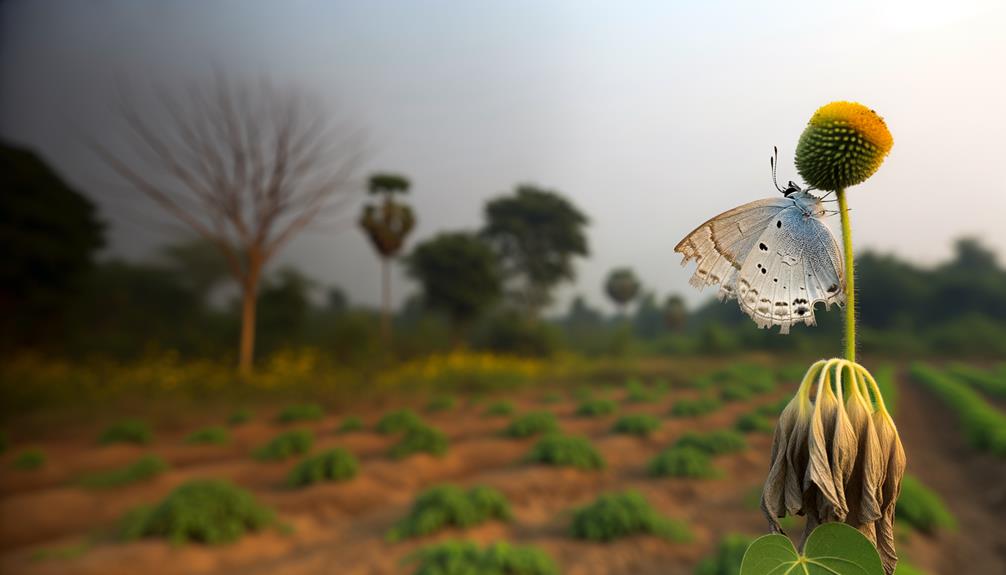
Understanding the environmental impacts on butterfly lifespans requires examining factors such as habitat destruction, climate change, and pesticide use, which collectively alter the delicate balance necessary for their survival and reproduction. Researchers have identified several critical environmental determinants:
- Habitat Fragmentation: Reduction of natural habitats due to urbanization and agriculture disrupts breeding and feeding patterns.
- Climate Change: Shifts in temperature and precipitation patterns affect migration, breeding cycles, and availability of host plants.
- Pesticide Exposure: Chemical agents used in agriculture can be toxic to butterflies, affecting both larvae and adult stages.
- Pollution: Air and water pollution degrade habitat quality, impacting the health and longevity of butterfly populations.
These factors greatly influence the lifespan and population dynamics of butterflies, necessitating thorough ecological studies.
Predation and Lifespan
Predation plays an important role in shaping the lifespan of butterflies, with various predators targeting different life stages from eggs to adults.
Research indicates that eggs and larvae are particularly vulnerable to predation by ants, spiders, and parasitoid wasps. Adult butterflies face threats from birds, bats, and amphibians.
Studies have shown that predation rates can dramatically reduce butterfly populations, thereby influencing their average lifespan. For instance, the lifespan of certain butterfly species like the Common Blue (Polyommatus icarus) can be curtailed greatly due to high predation pressure.
Predation not only impacts individual lifespans but also has evolutionary implications, favoring the development of defensive mechanisms such as mimicry and chemical defenses, which are essential for survival.
Conservation Efforts
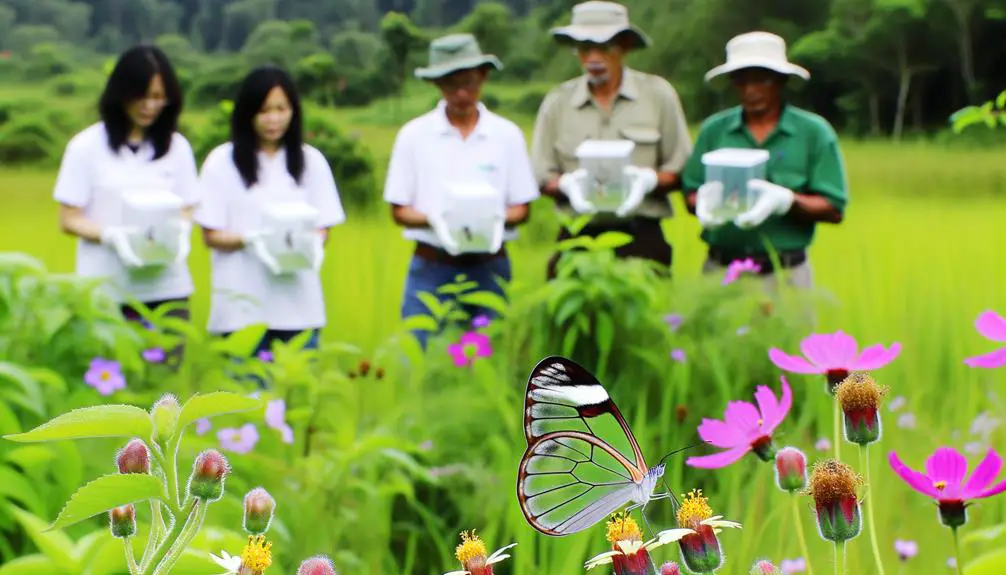
Despite the challenges posed by predation, strategic conservation efforts are essential to safeguard butterfly populations and guarantee their long-term survival. Recent research has identified several key strategies to support butterfly conservation:
- Habitat Restoration: Rehabilitating native habitats to provide essential resources such as nectar sources and host plants.
- Pesticide Management: Reducing the use of harmful pesticides that adversely affect butterfly populations.
- Climate Change Mitigation: Implementing measures to counteract the effects of climate change, which disrupts migration patterns and habitat suitability.
- Public Education and Engagement: Promoting awareness and involvement in conservation activities through community programs and citizen science projects.
These initiatives, when effectively integrated, can enhance the resilience of butterfly species, ensuring their persistence despite ecological threats.
Conclusion
In coincidence with the myriad factors influencing butterfly lifespans, the shortest-lived species exemplify the delicate balance within ecosystems.
The adult stage, often ephemeral, is critically impacted by environmental conditions and predation pressures.
Extensive research underscores the necessity of conservation efforts to mitigate these influences.
Intricately linked to their habitats, butterfly lifespans are a symbol of the fragility of natural systems, necessitating ongoing scientific inquiry and ecological preservation to sustain their existence.

